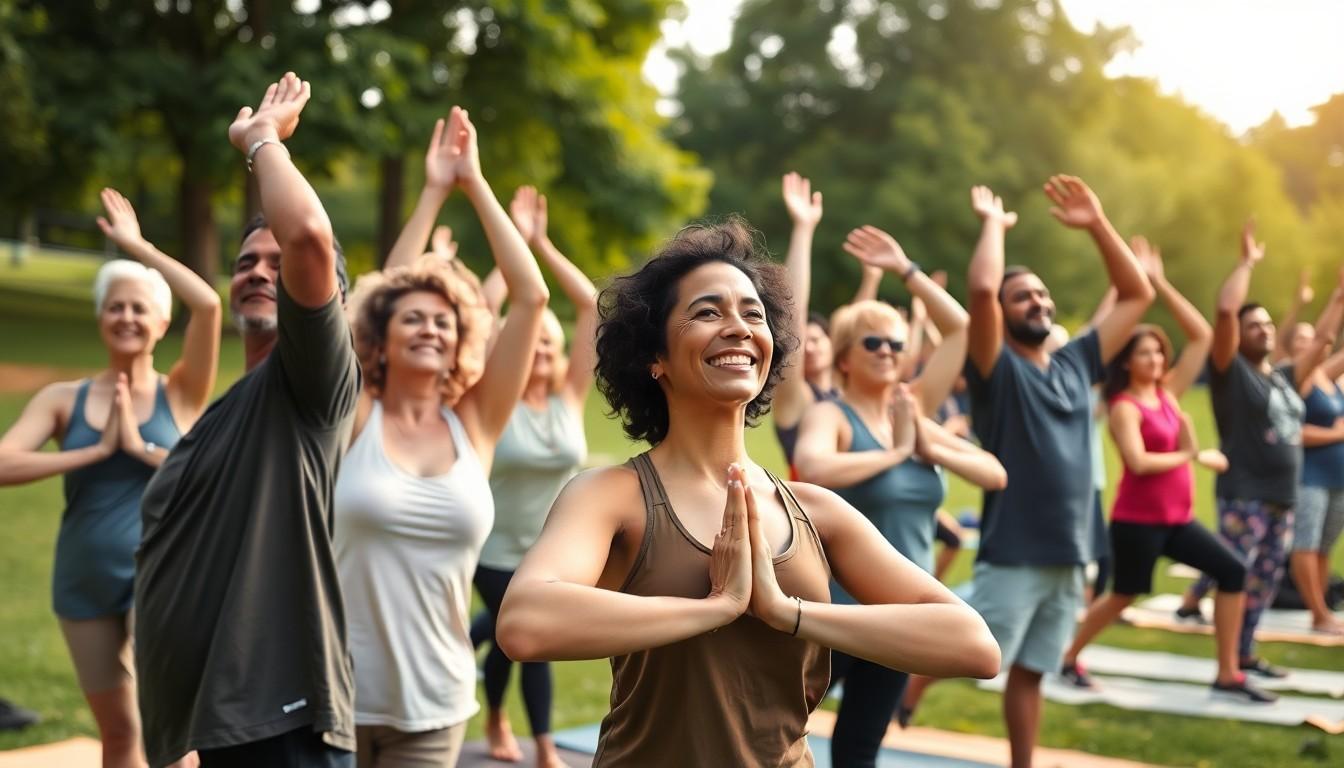The Best Fluffy Pancakes recipe you will fall in love with. Full of tips and tricks to help you make the best pancakes.
In today’s fast-paced world, staying healthy can feel like a luxury reserved for the elite. But who says wellness has to break the bank? Imagine sipping on a green smoothie while lounging in your cozy living room, all without spending your entire paycheck. It’s time to debunk the myth that self-care is synonymous with high prices.
Wellness for less isn’t just a catchy phrase; it’s a lifestyle choice that anyone can embrace. From budget-friendly fitness hacks to affordable organic meal prep, this guide will show how to prioritize health without sacrificing financial stability. So grab that reusable water bottle and get ready to dive into a world where feeling great doesn’t cost a fortune. After all, who wouldn’t want to save a few bucks while looking fabulous?
Understanding Wellness for Less
Wellness doesn’t need to come with a hefty price tag. This concept proves accessible for everyone, regardless of budget.
Defining Wellness
Wellness encompasses physical, mental, and emotional health. It focuses on holistic well-being instead of mere absence of illness. Individuals achieve wellness through balanced nutrition, regular physical activity, adequate rest, and stress management techniques. Consider activities like yoga, meditation, and mindful eating. These practices support wellness while remaining affordable. Access to wellness resources often exists in local communities, making it easier for individuals to find low-cost options. Affordable wellness strategies lead to healthier lifestyles, proving that well-being isn’t limited to premium services.
Importance of Affordable Wellness
Affordable wellness significantly impacts overall health. When health resources are accessible, people are more likely to engage in positive lifestyle changes. Financial constraints often deter many from pursuing wellness initiatives. Lower-cost alternatives make fitness classes, healthy foods, and self-care practices available to a broader audience. Public health studies indicate that inclusive wellness programs improve community health outcomes. Expanding affordability encourages consistent participation, leading to long-term health benefits. Cost-effective wellness strategies create a more equitable environment, promoting a culture of health for all.
Budget-Friendly Wellness Practices

Embracing wellness doesn’t require a hefty price tag. Affordable options exist that cater to various aspects of health.
Mindfulness on a Budget
Practicing mindfulness can enhance well-being without significant costs. Free apps offer guided meditations tailored to different experience levels. Local community centers may provide low-cost yoga classes. Walking in nature provides a serene environment to reflect and decompress. Journaling helps clarify thoughts and emotions, requiring only a notebook and pen. Engaging with free online resources can introduce new techniques cost-effectively. Combining these activities promotes mental clarity and emotional balance without financial strain.
Affordable Nutrition Tips
Eating well doesn’t have to be expensive. Planning meals helps reduce impulsive buying, leading to better budgeting. Choosing seasonal produce often costs less and ensures freshness. Bulk buying items like grains and legumes supports savings on staples. Cooking at home reduces expenses compared to dining out, plus it allows for healthier meal options. Exploring local farmers’ markets can uncover affordable fresh food choices. Utilizing simple recipes with minimal ingredients encourages nutritious eating without financial pressure.
Cost-Effective Fitness Options
Affordable fitness options exist for everyone eager to maintain a healthy lifestyle without financial strain. People often overlook simple alternatives that deliver effective workouts.
Home Workouts
Home workouts offer flexibility and convenience. Online platforms provide free or low-cost exercise videos, covering various styles, from strength training to yoga. Many fitness enthusiasts create routines that utilize body weight, eliminating the need for expensive equipment. Basic tools like resistance bands or dumbbells are often available at reasonable prices. Additionally, motivation thrives through virtual communities where individuals share tips and progress, fostering a supportive environment. Home workouts align with diverse schedules, making it easier for anyone to carve out time for fitness.
Community Resources
Community resources abound, providing opportunities for affordable fitness. Local parks often host free exercise classes such as Zumba or aerobics. Many community centers offer low-cost memberships that include access to gyms, pools, and fitness programs. Volunteers frequently organize group runs, cycling events, or fitness challenges. Public libraries might even provide access to fitness DVDs or equipment to check out. Engaging with nearby resources promotes physical activity while connecting individuals to their communities, reinforcing a culture of health and well-being.
Free and Low-Cost Wellness Resources
Accessing wellness resources doesn’t require a significant financial investment. Many free and low-cost options exist to support a healthy lifestyle.
Online Platforms
Countless online platforms provide wellness resources at no or minimal cost. Websites and apps offer free workout videos, guided meditation sessions, and fitness challenges. YouTube channels dedicated to health and fitness feature an extensive range of workouts for all levels, from yoga to high-intensity interval training. Apps like MyFitnessPal and Lose It! facilitate budgeting meals and tracking nutrition without charges. Additionally, numerous blogs provide budget-friendly recipes and wellness tips, making it easier to adopt healthier habits.
Local Support Groups
Local support groups connect individuals with like-minded people pursuing wellness goals. Community centers often host free workshops on nutrition, stress management, and physical activity. Participating in group exercise classes, designed for all fitness levels, fosters a sense of camaraderie and motivation. Many neighborhoods organize walking groups or outdoor fitness events that welcome everyone. Local libraries sometimes offer wellness programs, providing access to health resources like books and DVDs at no cost. These community initiatives encourage collective well-being and allow individuals to share experiences and strategies.
Conclusion
Embracing wellness for less is not just a dream; it’s a practical reality that anyone can achieve. By prioritizing affordable strategies and utilizing community resources, individuals can enhance their physical, mental, and emotional well-being without breaking the bank.
With a little creativity and resourcefulness, one can find numerous ways to stay healthy and happy. Whether it’s through budget-friendly meal prep or engaging in free fitness activities, the journey to wellness can be both fulfilling and economical.
Ultimately, making wellness accessible fosters a healthier community where everyone can thrive. It’s time to redefine the narrative around health and embrace the idea that well-being doesn’t have to come with a hefty price tag.


